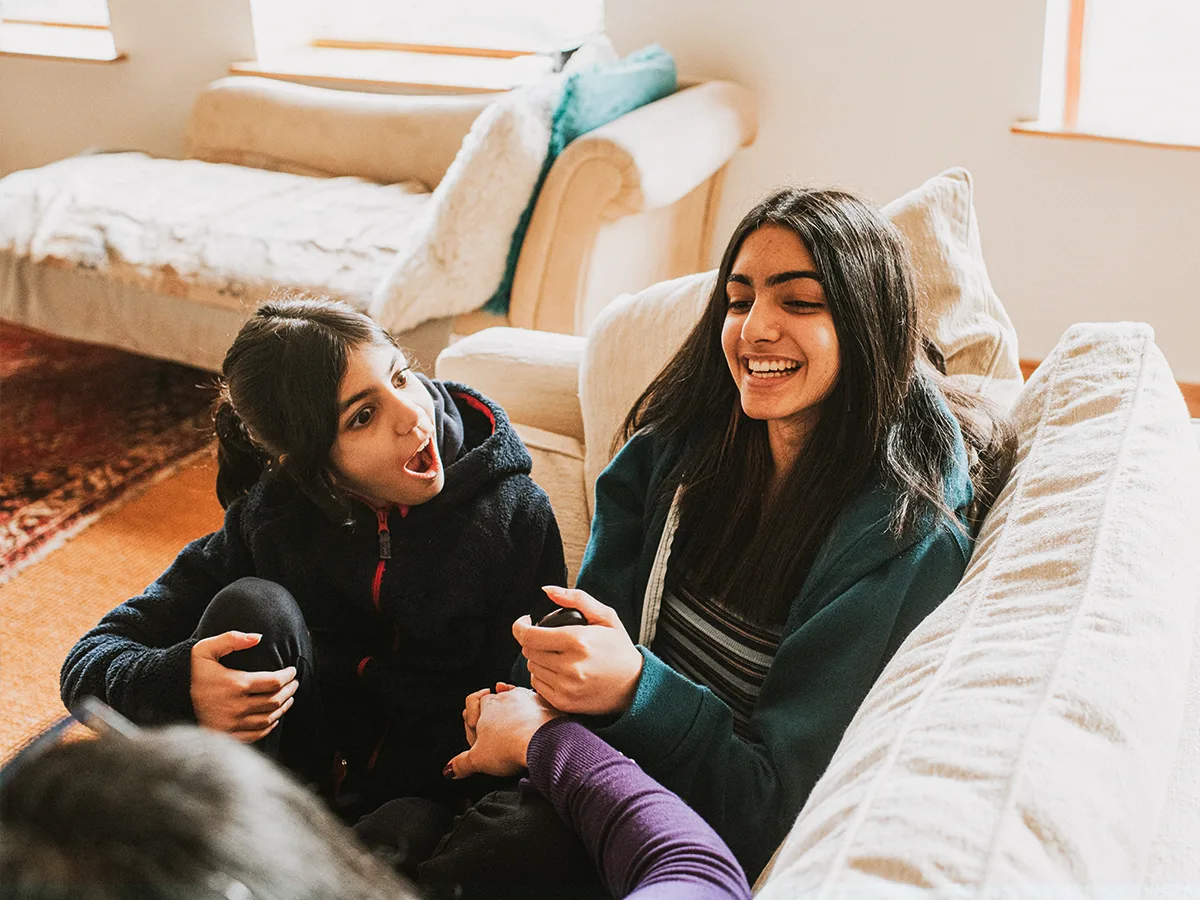ADHD and trouble with personal boundaries in kids

At a glance
Personal boundaries help us build healthy relationships.
Kids with ADHD often struggle with boundaries.
Understanding why kids struggle and working on skills can help.
Personal boundaries are key to navigating life around other people. They help us build healthy relationships and stay safe. They let us ask for what we need and be respectful of others. But symptoms of ADHD can make it hard for kids to set boundaries for themselves and respect those of other people.
These symptoms include:
Impulsivity
Trouble managing emotions
Challenges with time management
Trouble prioritizing
There are two main types of boundaries — physical and social. Learn why kids with ADHD struggle with each type, and what you can do to help.
Trouble with physical boundaries
Physical boundaries help us protect our bodies. Kids who have trouble with physical boundaries may touch people without asking or get too close while talking to someone else.
That’s because many kids with ADHD struggle with self-control. They’re often impulsive and act without thinking. So, a child with ADHD might rush up and hug a friend without asking if it’s OK. Or they might get so caught up in the moment that they don’t realize they’re playing too rough.
Trouble with social boundaries
Social boundaries can be even more challenging for kids with ADHD. Kids may interrupt, talk too much, or talk loudly. They might overshare or say something upsetting without meaning to.
Kids with ADHD may also struggle to spot the signs that they’ve crossed a boundary, like a friend who rolls their eyes or backs away.
Respecting other people’s time is another challenging boundary. Kids with ADHD are often late, stay too long, or seem totally unaware of other people’s schedules. This can seriously affect social, work, and school situations.
Help with respecting boundaries
There are many ways you can help your child set and respect boundaries. Keep in mind:
A social rule that seems obvious to you may not be clear to your child.
Kids with ADHD are likely to have lower self-esteem and to feel emotions more intensely. Try to remember that before you react to their behavior.
Imagine that your child has not respected a boundary and has taken home a toy after playing at a friend’s house.
It’s tempting to say, “Of course you can’t borrow someone’s things without asking.” A statement like that can add to feelings of shame or embarrassment, especially if your child wasn’t aware of this unspoken rule.
Instead, be proactive. Set clear expectations before your child plays at a friend’s house. You could say, “I know Kyle has really cool toys. You can ask to play with them while we’re there. But we won’t take any home with us.”
Talking with your child ahead of time and coming up with solutions together can help your child be more self-aware. Practice how to handle different situations at home, where the stakes are lower and there’s no risk of embarrassment.
Help with setting boundaries
ADHD is a problem with . Trouble with these skills doesn’t just make it hard for kids to respect other people’s boundaries. It can also impact their ability to set or communicate their own boundaries.
For example, a child with ADHD might make plans to hang out with a friend on the weekend. When another friend wants to get together on the same day, the child doesn’t know how to say, “I can’t, but how about another day?” Instead, the child tries to cram in seeing two kids on the same day, which means cutting time short with both friends. The whole situation creates a lot of anxiety.
Trouble with social skills or with managing emotions can also create problems. Kids might not react in an appropriate way if their own boundaries aren’t respected. For example, when somebody cuts in line ahead of them, they might blow up or break down instead of just speaking out.
You can help your child build up these skills through practice and reminders. Role-play ways to respond when your child feels their boundaries have been crossed. Help your child recognize the consequences of not setting boundaries.
Want to learn more about ADHD and social challenges?
Listen to a podcast episode about ADHD and bullying.
Get tips for role-playing social situations.
Key takeaways
There are two types of boundaries — physical and social.
ADHD symptoms make it hard for kids to communicate their own boundaries.
Practicing responses to situations can help kids build skills.


